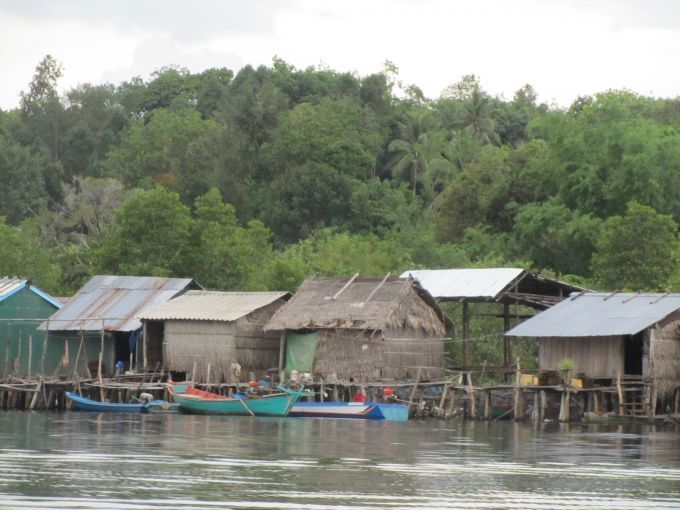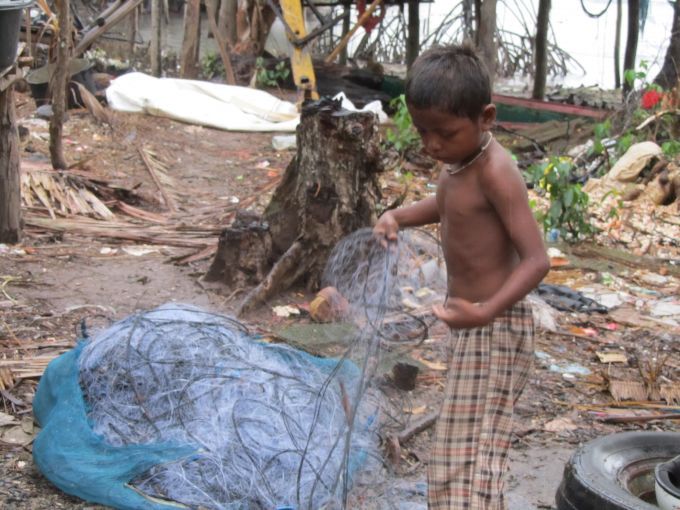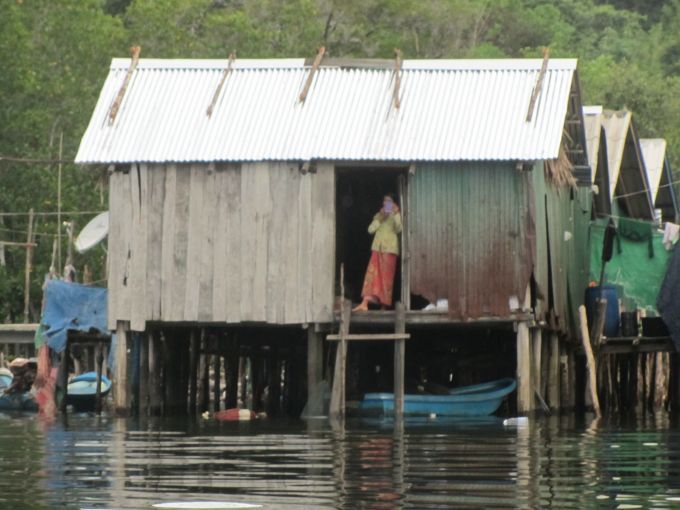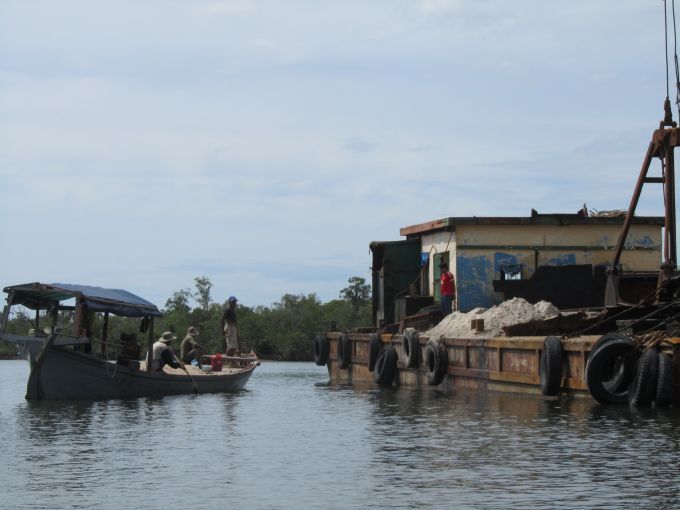One of the hardest parts about reporting on a little-covered issue like illegal sand mining is just getting to the generally rural and often remote places where it’s happening.
The fishing villages in the mangrove-rich estuaries of Cambodia’s Koh Kong province are a good example. For years, villagers have complained that rampant illegal sand mining in the area is wiping out the crabs and fish that provide their living. Things have gotten so bad that many families have had to send members to work in distant Phnom Penh garment factories, or they have simply moved away altogether. The dredging is also a threat to several species of endangered dolphins, turtles and otters that live there. The ships even operate inside a wildlife sanctuary.
To get a firsthand look at all this, I flew to Phnom Penh, at the tail end of a reporting trip through China. The next day I spent about six hours on a rickety bus to get to the town of Koh Kong, clear on the other side of the country on Cambodia’s western shore. From there, I got a ride in a fishing boat the size of a large canoe out to Koh Sralao, a waterside village of huts on stilts that has been particularly hard-hit by the sand dredging. The next day I went out in another fishing boat to find the dredges themselves tearing up the bottom of the estuary. That’s where these pictures were taken. After a night spent on the wooden floor of a hospitable local family’s hut, it was time to do the whole trip again in reverse. All in all, it took about 3 days of travel for one solid day’s reporting.









